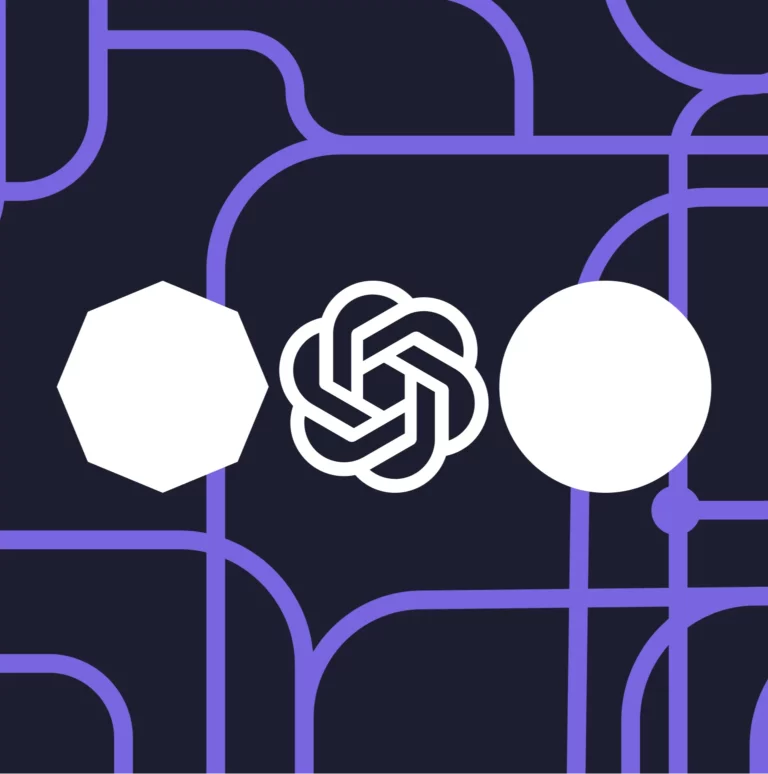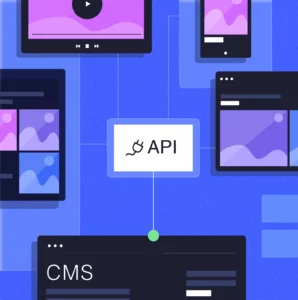Summary
In the first few months of 2023, generative AI has burst on to the scene and begun to change our relationship with technology forever. Already, there’s plenty of evidence to suggest that people in a wide range of jobs will have to adapt quickly or risk being replaced. In this article, we explore the impact AI is having on the web design and development industry, as well as how businesses, and people, should approach working with this innovative technology.
———
AI tools are nothing new. We’ve all been using them for years, from chatbots to predictive text to voice-controlled assistants like Siri and Alexa. But the recent mainstream adoption of AI tools such as Chat GPT, and the rapid advancement of the technology itself, has caused huge disruption across a number of industries.
Many assumed that people like marketers, software developers, and UX and UI designers would be some of the last ones at risk of having their jobs taken by AI, due to their need for creative skill and use of human emotion. Ironically, these roles have been some of the first to come “under threat” over the past few months.
AI’s speed and efficiency is already forcing us to ask questions about the future of the web design and development industry. With that in mind, one question in particular has dominated discussion online so far this year:
Are our jobs in danger of being taken by AI?
By now, you’re almost certainly aware that AI offers incredible value by accelerating workflows and augmenting skills. Some of the most beneficial use cases lie in:
- Brainstorming and ideation
- Assistance in research and information-gathering
- Writing copy
- Writing code
- Image and video creation
- Data analysis
- Automating manual processes.
AI can also devise entire business and marketing strategies, solve complex problems, and even create its own AI-powered applications from scratch. Perhaps most importantly, it can do all these tasks in a matter of seconds, when most of them would take a human several hours, days or even months.
The Latest News and Tools (at the Time of Writing)
Over the past few months, there are more and more AI-powered tools being released on an almost daily basis.
The number of AI tools that have been released recently is staggering, and the capabilities of some of them is truly mind-blowing. Just last month, in March 2023:
- GPT-4 was released as an upgrade to Chat GPT. GPT-4 can understand images, process 25,000 words in one go, earn a top 10% score on complex exams, and even demonstrate some advanced reasoning capabilities.
- Adobe released Firefly, which is a programme with a range of new generative AI features. It can create outstanding new content using simple language, with almost-unlimited creative options like turning 3D compositions into photorealistic images and automating advanced video editing processes.
- GitHub launched CoPilotX, which can supposedly boost coding speed by up to 55%. CoPilotX has similar features to Chat GPT, but will be used by software engineers and developers to boost productivity and time-to-market.
- And, just last week, Stability AI released its Stable Diffusion XL model, offering photorealism through an intricate editing interface. It’s reportedly built with around 2.3 billion parameters.
It’s both exciting and terrifying to think these highly intelligent tools are just the tip of the AI iceberg. When you consider how common it’s now become to use AI to develop even more advanced AI, it seems that the rate of evolution will only continue to increase exponentially from here.
How is AI Transforming Design and Development?
While these AI tools are extremely impressive, it’s not as straightforward as simply plugging them in and sitting back while they literally do your work for you. It’s possible we may get there one day, but right now we believe we’re a long way off.
These tools are highly sophisticated and intuitive, and their adoption is probably going to change the way we all work forever. However, this should be seen as technology that will augment and enhance people’s ability to do their jobs, or create new jobs entirely, rather than “steal” them away from us.
The current use cases for AI are mostly just ways for you to do your work, much faster and more effectively. This could either be done by automating processes to save time, or by supplementing your existing skill-set with new capabilities with the help of AI. For example, if you wanted to convert your code from one language into multiple languages, you would be able to do this with the help of Chat GPT.
When it comes to user experience (UX) design, one crucial thing AI will always be missing is human empathy, emotion, and understanding. A company looking to create a high-performance website that supports their strategic business goals and engages their target audience will fail if they don’t take into account human understanding and collaboration between them and their web development agency.
Outlining the What and the How is important, but the Why is arguably what drives great UX and UI.
“Design is not just a visual experience, it’s an emotional one. It should make people feel something.”
Nathan Shedroff, Author and Professor of Design Strategy
UX design is a nuanced, collaborative process, focusing on the specific requirements of the business and the specific needs of the target audience. You can save a lot of time using AI to produce a high volume of early conceptual designs or accelerate your copywriting process. But without the human element, none of these things will be authentic or anywhere near the required standard.
Potential Concerns and Risks with AI
Of course, we’ve not even mentioned the rising concerns and risks associated with AI yet. Just last month, over 1,000 technology leaders and influencers signed a petition to halt the development of generative AI until more governance can be introduced to ensure its safety.
There are still some serious grey areas regarding the use of this technology in business as well, from regulations and legal implications to the copyright of creative work like logos and images. These are providing opportunities for a wide range of new forms of cyber crime, phishing, and “deep-fake” imitations which could spiral out of control if left unchecked.
There are also plenty of moral issues surrounding AI that we must consider. For example, what implications will there be for our society if global businesses do begin replacing humans with AI on a large scale?
A key concern is that Generative AI is also having a significant impact on the environment, which is a conversation most people seem to be avoiding for the time being. With the global fight to reduce carbon emissions intensifying, and more businesses placing sustainability at the core of their values, there needs to be some action taken to balance those priorities with the efficiency and speed enabled by AI.
The SoBold Perspective
From our perspective, as a leading design and development agency, we believe that people will always want and need to work with other people. Personable relationships, real-life experience, and critical thinking are all essential parts of our work. In many cases, that’s also what many of our clients value most about our services.
Granted, we’re always looking for innovative new ways to push the boundaries, and AI is an incredible tool that will help us do that. But it won’t replace crucial human characteristics like empathy, emotion, and subjective opinions.
It will, however, help us spend less time on low-value tasks, and more time to focus on building stronger relationships and gaining a deeper understanding of our clients’ needs. That will only result in improving the work we deliver, which is something we’re always striving to achieve.
The Verdict on AI (for Now)
This year will probably be looked back on as a turning point in history when AI was introduced to the world. But this technology won’t replace too many jobs just yet. Instead, it will enhance our ability to work smarter, faster, and more efficiently.
For now, the only people at risk of losing their jobs to AI are those who fail – or refuse – to adapt to this new way of working and embrace the change. Similarly, if you’re using AI because you’re being lazy or complacent, that will also cause problems. You should never use work produced by a generative AI tool without checking its quality and accuracy, and you’ll always need to add a human touch before considering it finished.
On the other hand, if you’re forward-thinking and agile, embracing AI will make you exponentially better at your job. Here at SoBold, we’re personally most excited by how AI has the potential to help us vastly improve the service we deliver for our clients.
Of course, this technology is evolving so fast that it’s difficult to predict where we’ll stand a year from now. We’ll be discussing this, and lots of other important trends, in our new monthly newsletter.






